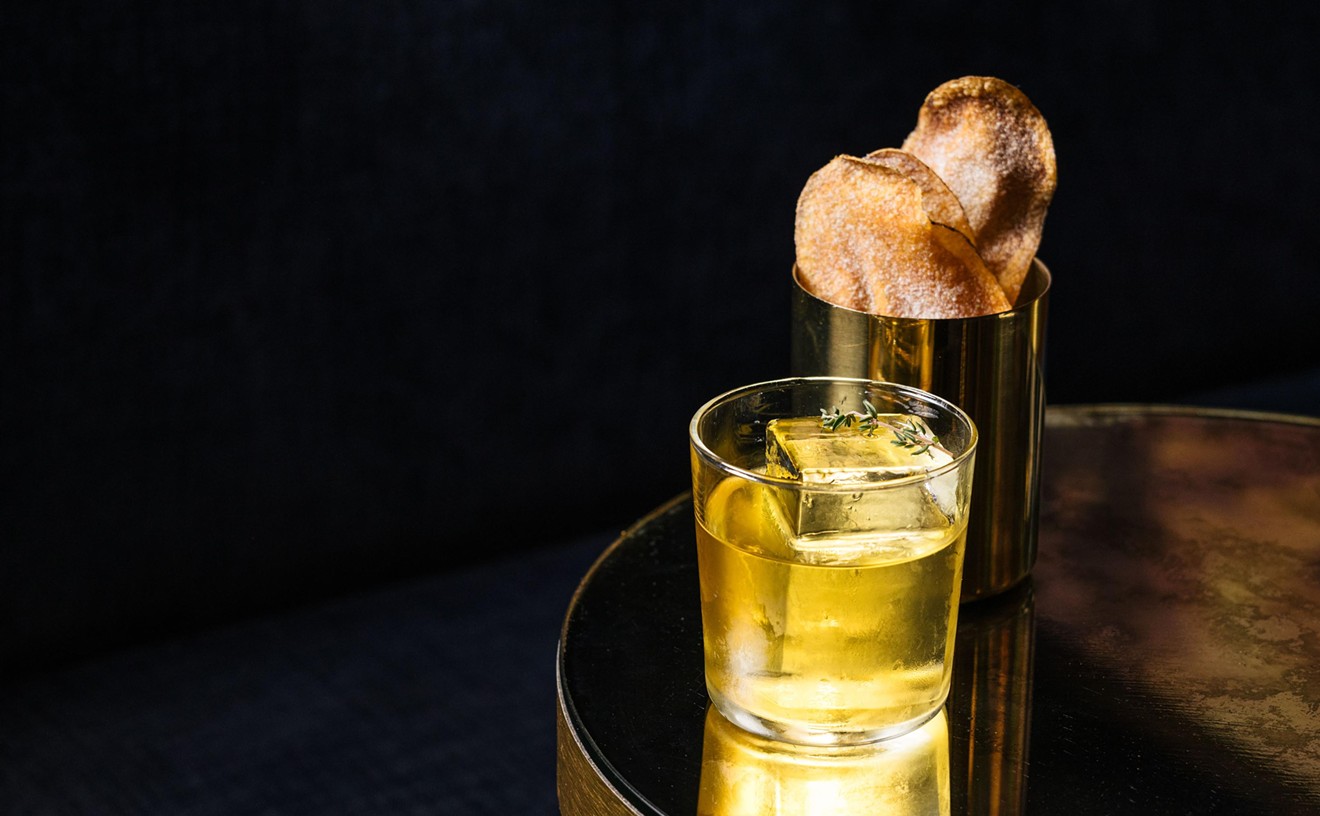My father liked to tell the story about the archaeological expedition on a dig in a remote, godforsaken location.
One of the team suddenly began yelling excitedly, signaling his colleagues to hasten over.
Pointing into a just-excavated section, he triumphantly announced that he has found the remains of an ancient Jewish civilization.
"How can you be certain?" asked a skeptical team member.
"Easy," replied the scholar, "I've found three Chinese restaurants."
From their first conscious moments, it seems, Jewish New Yorkers are instructed by their parents to pursue a trinity of virtues that makes life meaningful: getting a good education, getting a good mate and getting good Chinese food.
The folks had very definite ideas about all three, and were not always pleased with my efforts. The pool cue, deck of cards and Daily Racing Form I carried to school suggested to them that the only way I'd get into Harvard Law was as a case study.
The tie-dyed, peace-sign-flashing girls I brought home also didn't inspire confidence, especially since "Far out" and "Groovy" just about exhausted their conversational repertoire.
And I suspect Little Shanghai would have given Mom and Dad pause about my taste in restaurants, too.
That's because although our party saw almost no empty tables on a scorchingly hot weeknight, we spotted no diners from the Orient. (Unless, of course, you consider Paradise Valley and Scottsdale part of the mysterious East.) Asian customers, believed the older generation, conferred badges of legitimacy and authenticity on a restaurant.
The place also is much too nice-looking to characterize as a Formica-topped ethnic "joint," the only possible outlet, in my parents' estimation, for topnotch Chinese fare.
It's nice to report that Mom and Dad could be wrong about something.
The dining room is soothing, with low-key Chinese ambiance. There's a raised painting of the Great Wall at one end of the room, and an embossed figure of a woman flanked by two scrolls opposite. But the mirrored panels, frosted glass and abundant supply of artificial plants are unlikely to stimulate patrons to launch into a rousing chorus of "The East Is Red."
Neither will the platter of pot stickers, six small morsels lacking the chewy dough and skillet-fried crunch that the best specimens exhibit.
The moo shu pork, though, gets you right on track. As any aficionado will tell you, this dish works best with a dab of moo, a dash of shu and lots and lots of pork. This hearty version packs substantial amounts of meat, carrot and egg into a zesty, plum-sauce-coated crepe.
Little Shanghai uses no MSG, which may account for the smooth, clean taste of its fish dishes.
Particularly outstanding is yui shan scallops. A generous portion of a dozen moist, meaty mollusks nestles with mushrooms and sliced zucchini in an absolutely irresistible, briny, wine-tinged sauce.
And don't worry about the asterisk on the menu indicating that this dish is "hot"--as at most Valley Chinese restaurants, nothing here is spicy enough to raise a blister on a newborn's tongue.
Orange roughy with lemon sauce is another tempting ocean-based platter. It's almost like tempura: hunks of mild, white fish inside big, puffy, bready batter. And the kitchen doesn't soften the lemon tang with tablespoons of sugar. This lemon sauce sports a zesty, tart kick that made for pleasurable puckering.
But the lemon zing almost did in the Shanghai cold-chicken plate. We had hoped that a cold dish might be a good hot-weather alternative. And judged just by its looks, it seemed we'd made a clever choice.
There's a ton of marinated, thick, shredded, all-white-meat chicken with cilantro and sliced tomato. Unfortunately, the powerful soy and lemon sauce punched out all other flavors.
We left about half the platter. When the server cleared off the table, he asked if we wanted to take the remainder home. Unwilling to waste food, we said sure. Later, I discovered on the check a dollar "box" charge for the Styrofoam container. Mom always encouraged us to clean our plates, but even she never goaded anyone to finish by charging for leftovers.
Luckily, taste, not parsimony, spurred us to knock off the kung pao beef. I'm pretty leery of Chinese restaurant beef, which often is tougher than the flank of a live cow. But the beef here was admirably tender, and perked up with onions, garlic and pepper.
The house special noodle dish mightily disappointed the kids, but their loss was our gain. They turned their noses up at all the vegetables that took up valuable noodle, shrimp, chicken and pork space. After they picked their way through, my wife and I happily nibbled away the remaining cauliflower, broccoli, zucchini, snow peas, carrots, cabbage and baby corn.
Ma bo bean curd will certainly please the nut-and-berry crowd. This dish is laden with enough tofu to swamp the Titanic. In addition, the seasoned minced pork, designed to enliven this dish, never showed up. A rabbi could have downed this platter without a twinge of guilt.
Little Shanghai doesn't set off paroxysms of gastronomic delight, just nods of quiet appreciation. It's steady, not dazzling. But diners who've had it with hit-and-miss, one-night, Chinese-food stands may find it the place to settle down in a comfortable relationship.
Korean Garden, 1324 South Rural, Tempe, 967-1133. Hours: Monday through Saturday, 11 a.m. to 10 p.m.; Sunday, 5 to 10 p.m.
Korean food doesn't have nearly the crowd appeal of other popular Asian cuisines. Compared with Chinese fare, it lacks complexity; compared with Japanese specialties, it lacks delicacy; compared with Thai dishes, it lacks variety.
But its more straightforward qualities should be an asset, at least in America. That's because Koreans share our love of beef, particularly beef cooked up over a charcoal-fired grill.
Korean Garden is sparely decorated. A few Asian prints, an old wooden chest and wood latticework in the windows furnish most of the adornment.
The room is divided into two sections that have nothing to do with cigarettes, but everything to do with lighting up. One area features tables with built-in grills for do-it-yourself barbecuing; the other is for wimps. You definitely want to be where the sizzle is. The side effects from this sort of secondhand smoke are easy to take.
Unlike most Oriental restaurant appetizers, Korean Garden's are actually worth ordering. Mandu tuigim--fried meat and vegetable dumplings--are just a Korean version of pot stickers, but they're much more flavorful than those you get at most chop suey houses.
Bindae duk, though, is uniquely Korean: It's a wonderful, thick-textured, bean pancake, flecked with scallions and browned in a skillet.
Both starters go well with OB (pronounced oh-bee), a Korean beer highly touted by my friend Michael. A martial-arts expert, he promised to dazzle us with his extraordinary command of the language. It turns out he knew exactly ten Korean sentences: "Give me one OB beer," "Give me two OB beers," and so on, all the way up to ten.
The centerpiece of dinner is the barbecued meat, and we ordered it two different ways.
Galbee are bone-in short ribs, and bul gogi are paper-thin slices of beef. The kitchen marinates them both in a highly seasoned (but not spicy hot) soy mixture, then brings the meat out, ready to cook at the table. Patrons can't grumble if the meat isn't cooked to their specifications.
(Novices should watch out for the glowing coals, recessed in the center of the table. They give off plenty of heat, although the noisy, hardworking fan above sucks off most of it, along with most tableside conversation.)
Gnaw the galbee like you would any barbecued ribs. Wrap up the bul gogi in lettuce fronds. There's a zippy, bean-paste sauce for dipping, too.
Serious carnivores expecting massive platefuls of beef on the hoof may be disappointed. The portions look like something devised by the American Beef Council, whose ads celebrate the nutritional wonders of beef, as long as it's dished up in three-ounce servings. Like most cultures except ours, the Koreans are more into taste than volume.
To fill in the cracks, there are rice and a half-dozen varieties of pickled vegetables. They're surprisingly mild, a calculated move by a concerned kitchen, since red-hot kimchee can launch the uninitiated into an altered state quicker than a Timothy Leary chemical compound. The small dishes of cabbage, radish, potatoes, lettuce, bean sprouts and seaweed add an exotic touch, and keep diners from ruminating about one-pound T-bones.
If you didn't come here to do your own barbecuing, Korean Garden also serves up plenty of ready-to-eat fare. Jap chae is an outstanding choice, a filling platter of thin, glass noodles smothered with scallions and lots of meltingly tender strips of beef.
And sae woo bokum features a generous portion of nine meaty shrimp and vegetables in an offbeat, garlic-heavy sauce.
The Land of the Morning Sun may be unfamiliar to residents of the Valley of the Perpetual Sun, but its cuisine, centered on beef, garlic, scallions, soy, ginger and pepper, won't seem nearly as foreign. If moo shu pork, tempura and Thai chicken are starting to get old, Korean Garden just might broaden your horizons.










